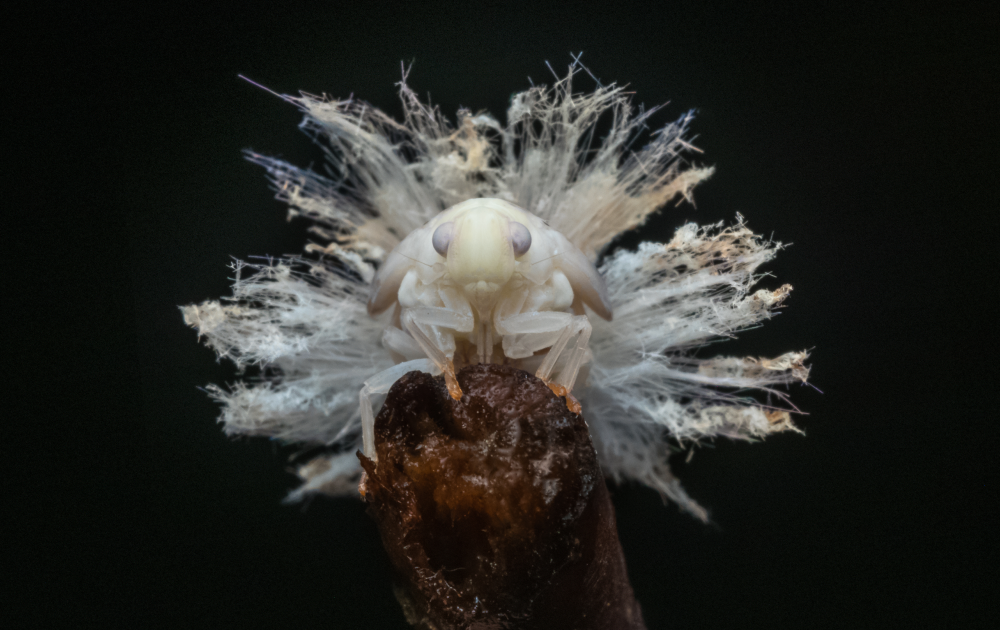Bother a leafhopper nymph and you’ll be faced with quite the display. These insects have evolved a truly wacky way of expelling wax from their derrieres, ranging from flailing “fiber-optic” strands to cotton-like fluff.
Wax is a crucial material for insects, acting as a hydrophobic layer of protection that keeps the right moisture in and the wrong moisture out. It’s therefore handy to be able to produce your own and keep it topped up, and if you’re already making wax, why not adapt some secondary functions for it?
Suffice to say, the planthopper nymphs have taken this idea and run with it. They exhibit a rich diversity of wax structures at their rear-ends, and it’s thought it could be a way of self-righting in mid-air so that they land on their feet.
As Ross Piper demonstrated in this clip from WILD BURMA: Chasing Tigers, leaping is an important defense mechanism for planthopper nymphs. Bother such a nymph and they may bristle, but get too close and they ping off at great speeds.
“The striking appearance of wax ‘tails’ – posterior wax projections on planthopper nymphs – has captivated entomologists and naturalists alike,” reads a 2024 paper that took a closer look at the possible functional role of their peculiar tails.
A macro shot of a nymph’s waxy tail.
Image credit: Dustin Rhoades / Shutterstock.com
“We quantitatively demonstrate that removing wax tails significantly increases body rotations during jumps. Specifically, nymphs without wax undergo continuous rotations, averaging 4.2 ± 1.8 per jump, in contrast to wax-intact nymphs, who do not complete a full rotation, averaging only 0.7 ± 0.2 per jump.”
“Nymphs with wax intact achieve a near perfect landing rate of 98.5 percent, while those without wax manage only a 35.5 percent success rate.”
Give ’em the ole razzle dazzle.
Another function for the waxy secretions may come down to safe ways of disposing of waste. The nymphs of a kind of Psyllid introduced to Florida are covered in a white waxy substance and produce long wax strands from their abdomens. A 2015 paper found they were using the wax to coat their waste, and in adult females, they even fired it away from their bodies in a way that may benefit their eggs and larvae. They concluded wax may be a way of keeping the colony clean so that honeydew didn’t build up.
So, from cleanliness to a dazzling defense against predators, it seems there are many benefits to the butt-sculpting displays of planthopper nymphs.
Source Link: You Are Not Ready For The Wacky Waxy Displays Of Planthopper Nymphs
